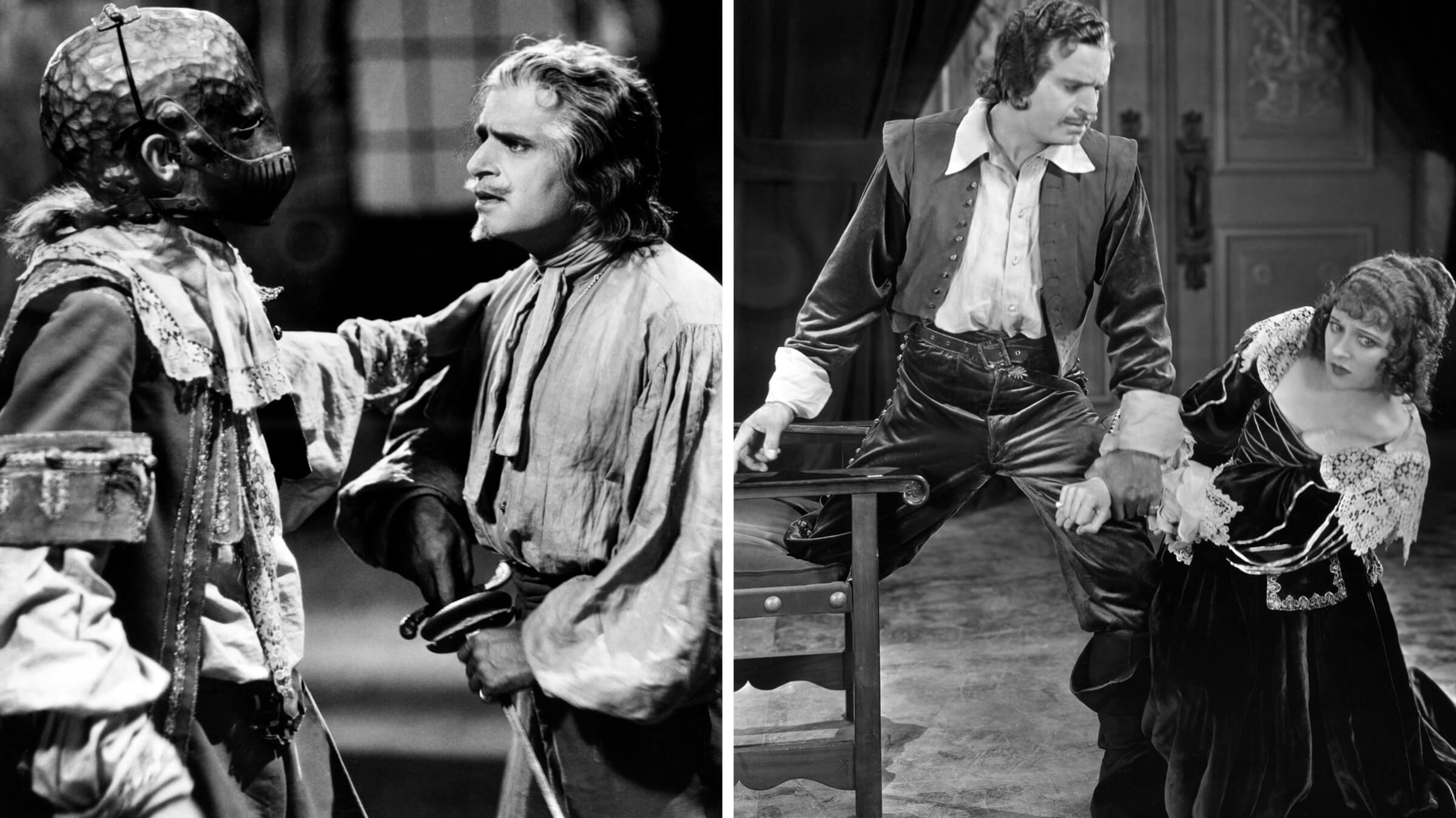Reprinted in conjunction with the screening of The Iron Mask at SFSFF 2023
DOUG TALKS A LITTLE IN LOVELESS FILM
Motion Picture News
This is the first time in years the public in New York has gotten a chance to leap right up to the box office and get a load of Doug Fairbanks in a new picture at popular prices. Heretofore for years agone Doug has always managed to feed it to the waiting public at two bucks a smack before he let them get a peek for six bits or less. Just to show Doug that Broadway appreciates this they are kicking in with enough of the six bits to smack the Rivoli house record in a Dobbs topper.
Of course, Doug and his boys may have had their own idea in giving The Iron Mask direct to the picture house public without the benefit of a legit run in advance. If so they were wise, ’cause there ain’t no two bucks worth on tap in this one. But in the picture houses it should wow ’em and probably will.
The Iron Mask is a sequel to The Three Musketeers, and it is loaded with a lot of the swashbuckling stuff that made Dumas and Stanley Weyman the best selling writers of their day. The story for The Iron Mask was worked out by Elton Thomas,* who frankly states via the program that it is based on The Three Musketeers, The Man in the Iron Mask and the memoirs of D’Artagnan, Richelieu and De Rochefort. Well, with a background like that he should have done a pretty good job. But he seemingly got so mixed up in his sword play that he killed off his heroine early in the story, or maybe he got around to the stage where he thought that the flaps wouldn’t believe that the lovely Constance, as played by Marguerite de la Motte, would fall for as old a guy as Doug as D’Artagnan, and figured the only way out was to have her bumped off.
Even without any great love interest there are enough thrills in the picturization to make it well worth while for anyone to sit through. It is advertised that Doug talks. He does, too, but only a little bit as a sort of prologue introduction and epilogue finish to the picture itself. Of course, that doesn’t make this picture a talker in the accepted sense.
Doug looks best as the greying D’Artagnan, although in the earlier scenes he is as athletic and acrobatic as ever, and his sword play is still as stirring as it was in the old days.
*Elton Thomas is a nom de plume for Douglas Fairbanks.
Excerpted from Freddie Schader’s review in the March 2, 1929, issue of Motion Picture News
ROMANCE THRIVES
Movie Makers
Dumas, who had a nice sense of the external humor of things, would extract much piquant satisfaction from the reactions of jaded Broadway audiences to Doug Fairbanks’s The Iron Mask, a United Artists product. These disillusioned photoplayfarers appear to enjoy the old-fashioned Dumas tale as much, if not more, than they enjoy the latest version of how youth goes wrong and comes out all pure in the end.
Fairbanks does a more restrained and intelligent piece of work in The Iron Mask than he did in The Three Musketeers because he is more in the period. In the earlier excursion into Dumas romance he imposed the Fairbanks tradition very emphatically on the story, and d’Artagnan was more Doug than Dumas. In the present photoplay Doug is a medium and not a motive. This is possibly to be credited to the reported research Fairbanks made before this last production and the expert guidance he received from French artists and advisors. At all events he is entitled to great credit for subduing his own very definite personality in favor of the character of Dumas.
The film is wholly artistic in treatment. It makes use of modern cinematography, its photography is admirable, its direction by Allan Dwan in excellent taste and its cutting is very happy. The action is eminently satisfying. There is nothing outstanding in any of these fields but there is nothing disappointing. It is workmanlike throughout. The adaptation may irritate Dumas fans because pieces are taken from the d’Artagnan saga with no regard for fidelity to the great French romancer. Yet the resulting scenario is faithful to the spirit of Dumas to a fine degree. Doug does a prologue and an epilogue in verse and we have not heard many Shakespearian actors do better with heroic declamation. These and incidental sound effects make the film a modified “talkie.” Personally we could have done without the sound effects, which strike us, in general, as puerile in any film whatsoever but the two recitations of Mr. Fairbanks provide an excellent start and finish.
We recommend The Iron Mask to those of our readers who are intelligent enough not to fear being old-fashioned and who still like to re-create early romantic thrills of a clean and wholesome kind. It is a good photoplay of a good story produced by a first-class director with a deservedly popular film star.
Excerpted from an unsigned review in the May 1929 issue of Movie Makers.

